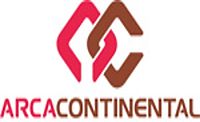FE’s new senior editor draws on background in commercial facilities
Casey Laughman on how his experience covering corporate headquarters will help him report on the food manufacturing industry.

Most people probably don’t think there’s much in common between a food manufacturing plant and a corporate headquarters, but I bet a lot of you understand that there is.
These similarities are one reason why I’m excited to join the staff of Food Engineering. Previously, I covered the commercial facilities market, where I wrote about topics that will ring a bell: Energy efficiency. Operations. Maintenance. Building automation. HVAC. Lighting. Sustainability (also known as all those other things I listed, plus a couple more).
Sustainability was the topic that did and still holds the most interest for me, because it touches literally everything that goes into operating a building. Coming from a traditional journalism background, I understood sustainability in a general sense, but it wasn’t until it became a cornerstone of my job that I truly grasped it.
I imagine it’s the same for many of you. Until you have to, you may not truly understand concepts such as the payback on new lighting or the effect of variable-speed drives. Or you may have never considered just how to build a presentation to the CEO to explain why you want to replace components of a production line when the old ones are working just fine.
While there are a lot of similarities between what I’ve covered in the past and what I’ll be covering now — just like the similarities between a plant and an office building — there are also a lot of differences. After all, ASHRAE doesn’t have a standard for nutrition labels, while the FDA doesn’t publish energy efficiency standards.
It’s really the best of both worlds for me: I get to keep drawing on things that I’ve learned from past experience and also learn new things I never expected to be learning. If you had asked me six months ago what dry processing is, I might have been able to make a reasonably educated guess, but if you ask me six months from now, I won’t have to guess.
What is most exciting — or worrisome, or maybe both — is knowing that there is a lot out there that is still unknown. I often joke that I love living in the future, and it’s true; the pace of innovation in both everyday life and in specialized areas such as sustainability means that there’s always something new and interesting to explore. But that carries a kind of cost as well, such as when automation means that we can be more productive with fewer people. While it may be great for the bottom line, it’s not always be great for the people affected.
But on balance, this is an exciting time for just about any industry, and it’s the same for the food manufacturing industry. Change is never really easy, of course, but it is often necessary.
I look forward to seeing exactly what comes next, and my job is to make sure that whatever changes do come, I’m able to help you understand and adapt. I’ll try to do more than that, but I promise to not do less.
Looking for a reprint of this article?
From high-res PDFs to custom plaques, order your copy today!








